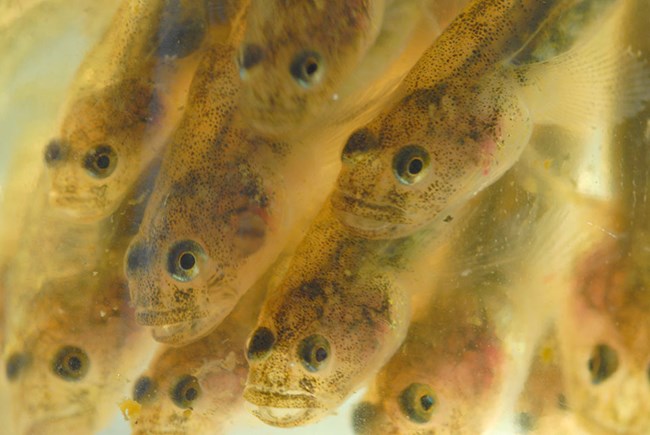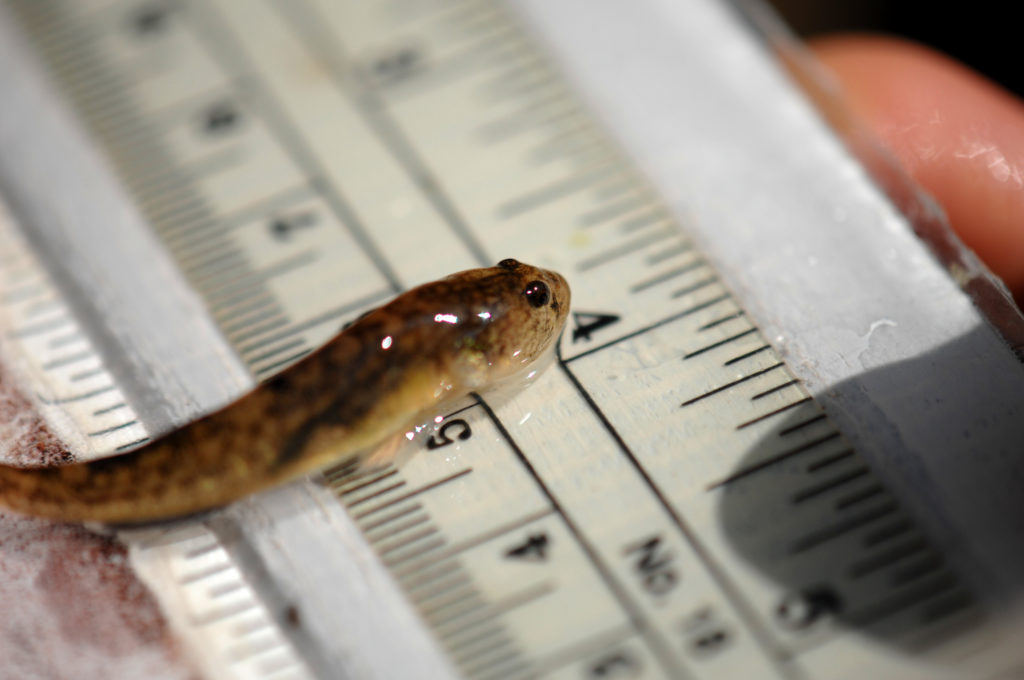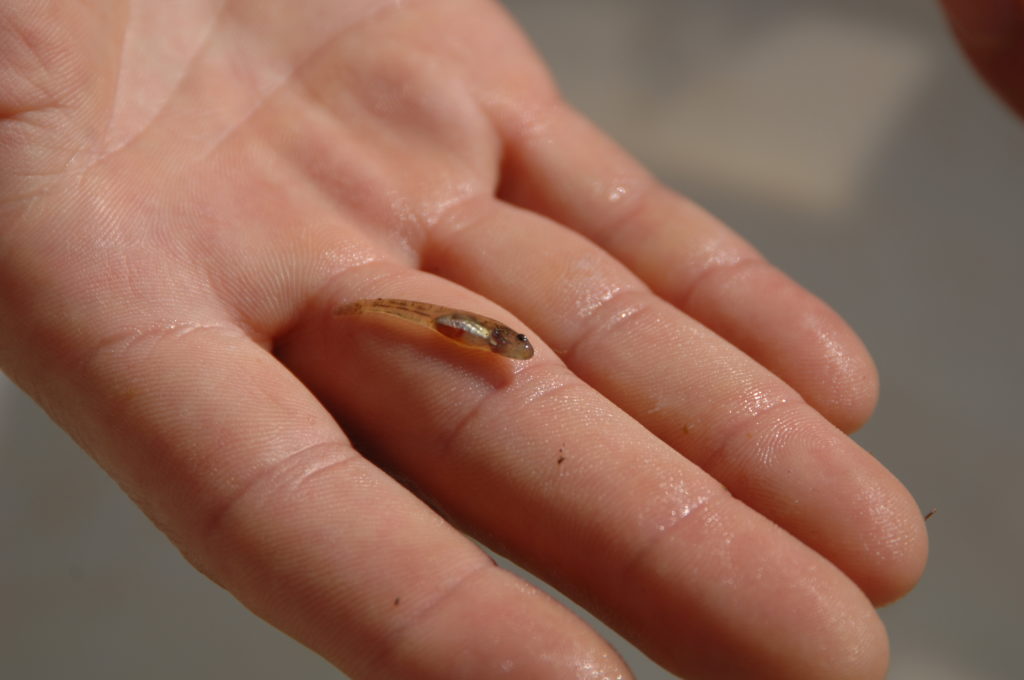Eucyclogobius newberryi
- Endangered – Endangered Species Act (1994)
- Endangered – American Fisheries Society Status (2008)
- Vulnerable – IUCN Red List Category
Physical Identification

The tidewater goby is a very peculiar fish. Rarely exceeding 50 mm, the tidewater goby is dressed with seemingly disproportionate features: a long blunt tail, large oblique mouth and wide set eyes close to its snout. Scales on these fish are often absent from the head and underside. These fish are nearly see-through but range in a variety of muted colors including gray, brown or olive, with dark speckled backs and sides. Breeding females can be identified by their black sides, dorsal and anal fins.
Life History
The tidewater goby is an annual species which means that they only live for about one year. Reproduction occurs year-round in warm waters in the southern portion of the species’ range with peak breeding occurring in late April through early May. When mating, male gobies will dig a vertical nesting burrow, about ten to twenty centimeters, in substrate usually composed of coarse sand. Females typically lay 300 to 500 eggs that will stick to the walls of the burrow until hatching, Male gobies will then guard the eggs, either in or near the burrows until they hatch, usually nine to eleven days.

Distribution
Larval gobies are pelagic, inhabiting the upper layers of the open sea, whereas mature gobies are benthic; living at the bottom of shallow bodies of water. Gobies are generally restricted brackish, somewhat salty, waters such as shallow lagoons and lower stream reaches in California’s coastal wetland habitats.Although most often associated with lagoons and estuaries, the tidewater goby has been found to frequent slack freshwater habitats as far as five miles from San Antonio lagoon in Santa Barbara County. The species’ current range also includes coastal portions of the Los Padres National Forest in the Big Sur area.
Threats

Threats affecting these federally endangered species can be attributed to modification and loss of habitat resulting from coastal development, channelization of streams and estuaries, diversions of water flows and alteration of water flows. Coastal developments are the greatest factor negatively affecting the tidewater goby. Potential threats to the tidewater goby include but are not limited to discharge of agricultural and sewage wastes, upstream alteration of natural sediment flows, and contamination resulting from vehicles.






